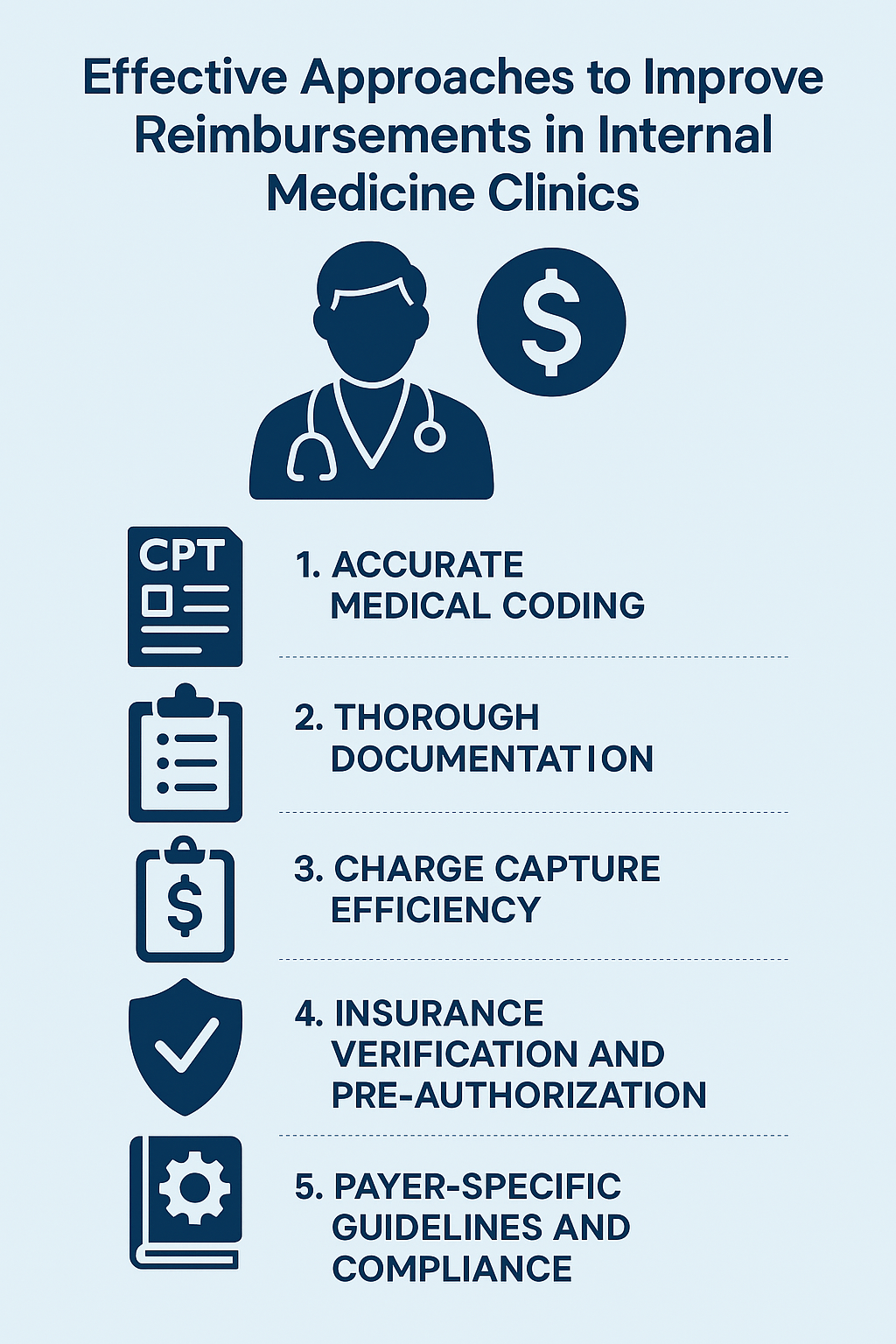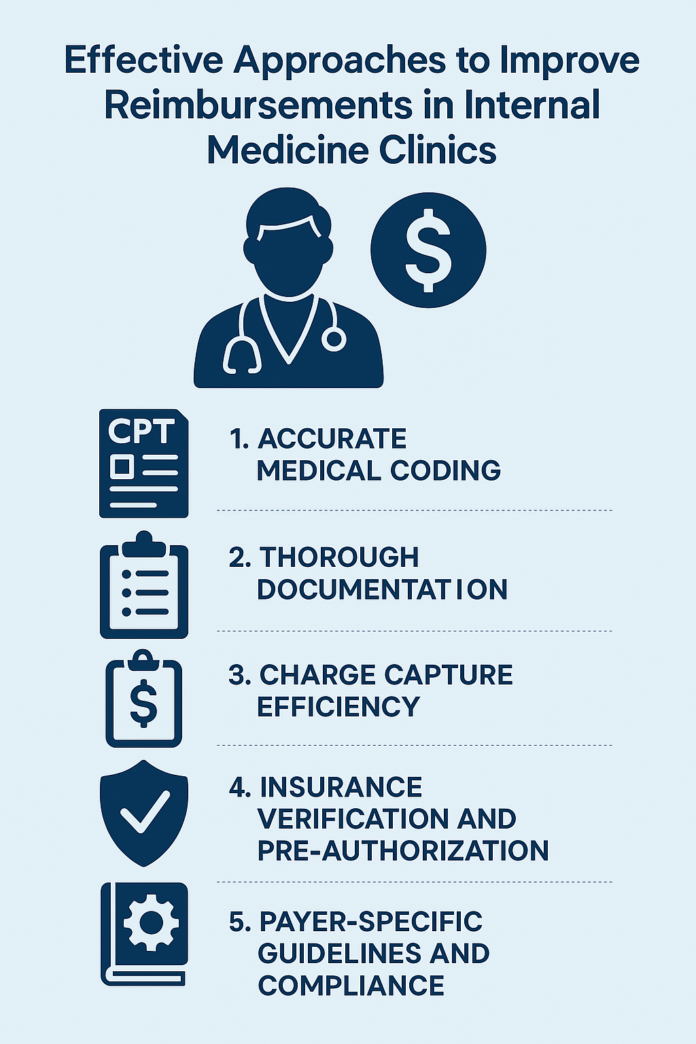Telehealth services have become indispensable to modern healthcare. With their convenience, accessibility, and patient-centered approach, telehealth visits are no longer just an option but a necessity for many practices. Along with this surge in adoption comes the need to ensure these remote services are billed accurately and reimbursed appropriately. This involves a combination of correct coding, compliance with federal and state regulations, and efficient revenue cycle management.
In this comprehensive guide, we will explore how to optimize telehealth billing for maximum revenue. We’ll cover key topics such as coding guidelines, important regulations, documentation best practices, and how to integrate technology effectively. By the end of this article, you’ll have a clear blueprint to streamline your telehealth billing process, safeguard compliance, and enhance your overall financial health.

1. Understand the Telehealth Billing Landscape
1.1 Rapid Growth and Rising Expectations
The telehealth sector has witnessed an exponential rise, especially over the past few years. What began as a convenient alternative for rural patients has now become a mainstream method for delivering care nationwide. With this shift comes new expectations from both patients and payers. Patients want prompt and secure virtual access to their healthcare providers, while payers (including Medicare, Medicaid, and private insurers) want accurate claims submissions that meet specific telehealth guidelines.
1.2 Why Billing Is So Critical
Even though telehealth visits may seem straightforward—no in-person appointments, no physical waiting rooms—the billing side can be deceptively complex. This complexity arises from:
- Constantly changing regulations: Telehealth regulations vary across states, and government agencies frequently update their policies.
- Coding intricacies: CPT (Current Procedural Terminology) and HCPCS (Healthcare Common Procedure Coding System) codes for telehealth can differ from those used for in-person visits.
- Reimbursement variations: Not all payers reimburse telehealth services at the same rate, and some might not cover specific types of virtual visits.
Understanding these elements is your first step in optimizing telehealth billing for maximum revenue.
2. Get Familiar with Telehealth-Specific Codes and Modifiers

Correct coding is at the heart of ensuring proper reimbursement. If your claims don’t reflect the accurate code sets, modifiers, or place-of-service details, you’ll likely see denials or delayed payments.
2.1 Commonly Used CPT and HCPCS Codes
- Audio-Visual Telehealth (E&M Codes): For many evaluation and management (E&M) visits conducted via telehealth, CPT codes such as 99201–99215 (for office or other outpatient visits) are often used.
- Telehealth Consultations: Consultation codes (e.g., 99241–99245 or 99251–99255) may apply if the service qualifies as a consultation under telehealth guidelines.
- Telephone Visits: For situations where audio-only visits are permitted, codes like 99441–99443 (telephone evaluation and management services) may come into play.
- G-Codes for Medicare: HCPCS G-codes like G2010 and G2012 can be relevant in specific Medicare telehealth scenarios (e.g., remote evaluations, virtual check-ins).
Each payer might have unique stipulations, so confirm that you’re using the precise code sets recognized by each insurer.
2.2 Place of Service (POS) and Modifiers
- Place of Service Code: Typically, a POS 02 (Telehealth Provided Other than in Patient’s Home) or POS 10 (Telehealth Provided in Patient’s Home) is required. This varies by payer, and some might still direct you to use POS 11 (office) with modifier 95. Always verify with the payer’s most recent guidelines.
- Modifier 95: This modifier indicates a synchronous telemedicine service rendered via audio and video.
- Modifier GT: Previously used for interactive telehealth services, but many payers now lean toward modifier 95 or rely on HCPCS codes.
Always stay updated on which modifiers are accepted by specific payers, including state Medicare and Medicaid programs.
3. Stay Current with Telehealth Regulations
Telehealth regulations can change quickly as healthcare evolves. The pandemic spurred multiple policy adjustments, allowing broader usage of telehealth. Some of these have been extended, while others have expired or been revised. Monitoring federal, state, and payer-level updates is critical for consistent compliance.
3.1 Federal Guidelines
- Centers for Medicare & Medicaid Services (CMS): CMS sets the pace for telehealth reimbursements under Medicare. Post-pandemic, CMS has rolled back certain provisions but also made some expansions permanent. Keep an eye on the annual Physician Fee Schedule for major updates.
- HIPAA Flexibility: During the public health emergency, certain HIPAA enforcement rules were relaxed. However, not all these relaxations remain in place. Ensure you’re adhering to HIPAA’s privacy requirements with secure telehealth platforms.
3.2 State-Level Regulations
- Parity Laws: Some states have parity laws requiring private insurers to reimburse telehealth services at rates similar to in-person visits. Others do not. Know your state’s telehealth parity status.
- Licensure Requirements: If you’re treating out-of-state patients, confirm you’re licensed or authorized to practice in that state. State-specific telehealth compacts or reciprocity agreements can simplify this process.
3.3 Private Payer Policies
Although certain private payers align with CMS guidelines, others maintain distinct telehealth policies. Some might require preauthorization, while others might reimburse only for specific telehealth services. Routinely visit insurer portals or contact your payer representative for the latest guidance.
4. Ensure Thorough Documentation
Even the most accurately coded telehealth claims can face denial without robust documentation. High-quality, detailed documentation serves two purposes: clinical continuity and proof of medical necessity for reimbursements.
4.1 Key Components of Effective Telehealth Documentation
- Patient Consent: Note that the patient consented to receive telehealth services, especially if the payer mandates explicit or documented consent.
- Platform Used: Mention the type of platform or technology that facilitated a synchronous (real-time) or asynchronous interaction.
- Location: Document both the provider’s and patient’s location during the visit (when relevant to the payer).
- Encounter Details: Capture start and end times, who was present (e.g., caregiver, interpreter), and the chief complaint or reason for the visit.
- Clinical Information: Note history of present illness, exam details (where applicable via audio-visual), assessment, and plan.
- Follow-Up Care: Specify any next steps, additional consultations, or recommended in-person visits.
4.2 Maintaining Compliance with Audits
Payers often scrutinize telehealth claims more closely. To prepare for potential audits:
- Keep a consistent documentation template for telehealth encounters.
- Store any visuals, images, or chat logs securely if they’re part of the patient encounter.
- Regularly review your records for completeness and accuracy.
By maintaining thorough documentation, you reduce denial rates and improve the likelihood of successful appeals if a claim is initially denied.
5. Train Your Staff and Providers
Implementing a robust billing process for telehealth depends heavily on the expertise of your administrative and clinical teams. A single coding error or oversight can disrupt claim approvals, so staff training is paramount.
5.1 Coding and Documentation Training
- Regular Workshops: Hold periodic seminars or in-service training to refresh staff on telehealth-specific CPT codes, modifiers, and place-of-service codes.
- Cross-Functional Collaboration: Encourage your clinicians to collaborate with your billing team. Clinicians should provide the necessary details in clinical notes for accurate coding.
- Reference Materials: Maintain a frequently updated digital or physical billing manual that includes telehealth guidelines, payer policies, and reference charts for coding scenarios.
5.2 Technology and Security Education
- Telehealth Platforms: Train providers on using secure video conferencing tools, scheduling, and telehealth EHR integrations.
- HIPAA Compliance: Emphasize secure handling of patient data during telehealth visits, especially in remote work settings.
- Incident Protocols: Outline clear procedures for addressing potential breaches or security incidents.
A well-informed team can preempt errors, speed up claim submissions, and reduce payment delays.
6. Strengthen Revenue Cycle Management (RCM) Processes
Your revenue cycle management (RCM) workflow is the engine that propels payment for your telehealth services. Streamlining each phase, from scheduling to final payment posting, can ensure maximum reimbursement and minimal denials.
6.1 Pre-Visit Eligibility Checks
Before a telehealth appointment, verify the patient’s insurance details and telehealth coverage. Tools like real-time eligibility checks can confirm benefits and detect prior authorizations needed.
6.2 Charge Capture and Claims Submission
- Automated Charge Capture: Employ an EHR or billing system that automatically translates clinical notes into codes and recommended charges for telehealth visits.
- Edits and Scrubs: Ensure each claim undergoes a systematic quality check (scrubbing) to catch errors before submission.
6.3 Denial Management
- Root Cause Analysis: Categorize denials by reason—coding errors, missing documentation, unauthorized services, etc.—to identify recurring issues.
- Appeals Process: Develop a swift process to re-submit corrected claims. Timeliness is critical, as appeal windows can be tight.
6.4 Key Performance Indicators (KPIs)
Common KPIs to monitor and improve:
- Days in Accounts Receivable (A/R): A shorter A/R cycle indicates faster claim settlement.
- Clean Claim Rate: A high clean claim rate shows your initial submissions are accurate.
- Denial Rate: A lower rate reflects better coding and documentation.
- Cost to Collect: Reducing staff inefficiencies and errors can help lower costs.
By consistently tracking these KPIs, you can proactively adjust workflows, improve staff training, or adopt better technologies to enhance overall telehealth billing performance.
7. Embrace Technology for Streamlined Billing
Leveraging specialized software that addresses the unique aspects of telehealth billing is vital. Automation and modern tools save time, reduce human error, and align clinical documentation with billing rules.
7.1 Electronic Health Records (EHR) Integration
An EHR that seamlessly integrates telehealth scheduling, documentation templates, and coding suggestions simplifies your billing process. Integrated systems reduce duplications, minimize manual entries, and allow real-time updates.
7.2 Automated Coding Assistance
Many billing platforms now use artificial intelligence or machine learning to suggest the right CPT codes based on progress notes. While these tools aren’t perfect, they help reduce common mistakes and highlight potential coding opportunities.
7.3 Telehealth-Specific Features
Some billing solutions offer:
- Automatic Place-of-Service Updating: Automatically incorporates correct modifiers based on the visit type (audio-visual vs. phone).
- Eligibility Verification: A built-in feature for verifying the patient’s telehealth benefits prior to the visit.
- Multi-State Compliance: If you provide services across different states, certain solutions track multiple state regulations in one platform.
When considering new billing software, opt for solutions that keep up with real-time regulatory changes, especially as telehealth rules shift.
8. Cultivate Good Patient Communication
Billing success isn’t just about codes and software; it also relies on transparent communication with your patients.
8.1 Upfront Discussions on Costs and Coverage
Patients often misunderstand telehealth costs and coverage, especially if they’re new to virtual care. Clear discussions regarding copays, deductibles, and coverage limitations help avoid surprises and payment disputes later. If possible, share a simple telehealth coverage FAQ via email or on your website.
8.2 Obtain Accurate Patient Information
Inaccurate patient demographics and insurance details lead to denials or delayed payments. Implement a robust check-in process where patients confirm or update their information before each telehealth appointment.
8.3 Prompt Payment Collection
Consider collecting any applicable copays or fees at the time of scheduling or immediately following the virtual visit. Online payment portals or secure payment links simplify and speed up the collection process.
9. Keep an Eye on Evolving Trends
Healthcare technology and telehealth policies continue to evolve. Practices that adapt quickly to new trends in telehealth billing stand to gain the most in terms of revenue and patient satisfaction.
9.1 New Telehealth Modalities
Emerging forms of care—like remote patient monitoring (RPM) and asynchronous telehealth—present fresh billing opportunities. Understand the codes (e.g., CPT 99453, 99454 for RPM) and policies each payer has for these services.
9.2 Legislative and Policy Shifts
State legislatures and Congress periodically introduce or modify telehealth-related bills. Joining professional organizations or subscribing to authoritative industry newsletters can keep you informed about pertinent changes.
9.3 Telehealth Across Specialties
Telehealth isn’t just for primary care—specialists like dermatologists, psychiatrists, and physical therapists have adopted virtual sessions with increasing frequency. Specialty-specific telehealth coding may differ significantly, making niche knowledge key.
10. Conduct Periodic Audits and Seek Expert Help
When aiming for ongoing optimization, periodic internal audits are your best friend. Reviewing a sample of telehealth claims on a quarterly or biannual basis can help spot oversights before they spiral into large-scale denials or compliance issues.
10.1 Internal Audits
During an audit, examine:
- Coding Accuracy: Check if the correct CPT codes and modifiers were used.
- Documentation Thoroughness: Ensure every telehealth note meets payer documentation criteria.
- Compliance with Regulations: Verify HIPAA protocols, licensure matters, and consent documentation.
10.2 External Expertise
Sometimes, it’s helpful to bring in a consultant, lawyer, or external auditor specializing in telehealth billing. They can:
- Offer guidance on complex regulatory issues.
- Suggest best practices drawn from working with multiple healthcare entities.
- Provide staff training or coding reviews.
Although it might incur an initial expense, expert insights can quickly pay for themselves through higher reimbursement rates and fewer legal complications.
11. Summary of Best Practices
- Stay Updated: Monitor changes in telehealth billing codes, modifiers, and regulations.
- Document Thoroughly: Capture key information like platform used, patient consent, and medical necessity details.
- Invest in Training and Technology: Equip your team with the right knowledge and tools to code accurately.
- Optimize Revenue Cycle Management: Use a robust approach to verification, coding, submissions, and denial management.
- Communicate with Patients: Clarity in costs, coverage, and appointment logistics prevents misunderstandings.
- Perform Regular Audits: Proactively catch mistakes and maintain consistent compliance.
Following these foundational steps will position your practice for long-term success in telehealth billing.
Conclusion
Optimizing telehealth billing isn’t merely about filing claims with the right codes or using the correct modifiers. It requires a comprehensive strategy involving thorough documentation, a well-trained staff, efficient revenue cycle workflows, and proactive adaptation to regulatory changes. By investing in these areas, you’ll reduce claim denials, secure faster payments, and significantly boost your overall revenue.
As telehealth continues to expand, practices that stay current on the latest rules, train their teams diligently, and use advanced billing technologies will lead the way. This is your opportunity to not only serve patients in an accessible, modern way but also ensure your practice remains financially healthy and resilient.
Adopt the strategies outlined in this guide, and you’ll be well on your way to mastering telehealth billing for greater revenue growth—keeping your patients happier and your bottom line healthier than ever.




